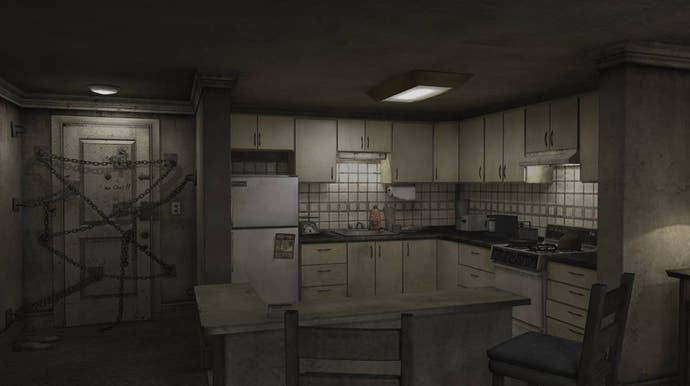Inside gaming's least safe safe rooms
Knock knock.
Via Facebook group chat, I'm speaking with Suguru Murakoshi and Hiroko Usuda from the now-defunct Team Silent. We're talking about their time working on Silent Hill 4: The Room as director and designer, respectively - diving into the creation of Room 302, the apartment that kicks off the story and remains ever-present in the narrative.
SPOILERS AHEAD FOR SILENT HILL 4, DOOM ETERNAL, DEATH STRANDING, WARHAMMER END TIMES - VERMINTIDE, FATAL FRAME 3: THE TORMENTED, AND AMNESIA: THE DARK DESCENT.
It's the only save point in the game, naturally turning it into a safe room. Over time, however, this initial promise of safety is broken by a series of increasingly dangerous hauntings, turning your home into an unfamiliar and hostile space.
"The concept of Silent Hill 4 was clear from the early stages of development - the fear of eroding the safest places," director Murakoshi tells me. "Three teams came up with a plan, and the concept of a room was chosen because it was the scariest of them. Since then, rooms have always been at the core."
Room 302 is terryfying from the off because it doesn't let you unlock the door from the inside. But at least the room is presented as your sanctuary. It's only halfway into the story that things change. Looking back, Usuda considers this a "contrasting expression".
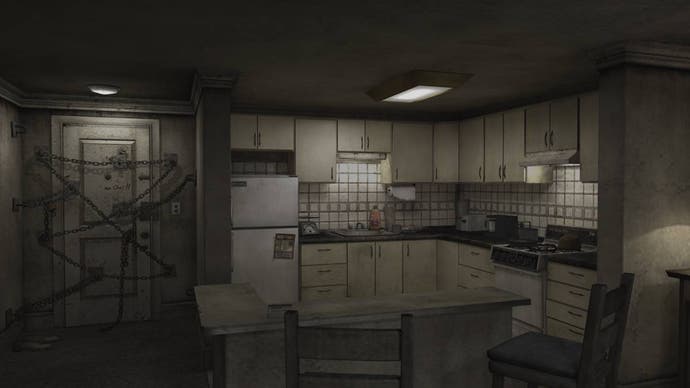
Safe rooms have long been present in video games. Survival horror has treated them as a tradition over the years, offering players a shelter to save their progress, resupply, and regain their breath. They are great motivators to continue venturing further in Resident Evil games despite the unforeseen horrors waiting on the other side of the door. Iterations on this idea can be seen in other genres as well, present in the likes of Dark Souls' bonfires, Darkest Dungeon's camps, and many others. Although the purpose of each safe room may differ, the expectation from players is the safe room is, in fact, safe. But some developers have subverted this expectation, finding a new way to expose horror in previously guarded spaces.
We all broke a sweat after hearing the news Nemesis was now able to break into safe rooms in the Resident Evil 3 remake. The news turned out to be untrue, thankfully, but other video games are not so reserved. Unsafe rooms, as I like to call them, have slowly emerged throughout the years. Illusions manifest themselves as psychological torments in Death Stranding's private rooms. Doom Eternal's hub area, being the most recent example, suffers an unexpected attack at one point during the story. "This stronghold will now serve as your prison," speaks the voice of Khan Maykr, now infiltrated into your navigation system. Demons quickly reveal themselves to be lurking in the shadows, ready to attack.


These moments can leave a long-lasting impression on players, but timing is everything when it comes to surprising them. Warhammer: End Times - Vermintide's The Red Moon Inn was created as an interactive space in which players could spend time in-between missions. Over time, the inn became a community hub, and studio Fatshark added special events and interactive elements to capitalise on this.
Fatshark unexpectedly threw all that out of the window via a free DLC mission in which the hub is overrun by Skaven. "We had a door to the cellar from the launch of Vermintide, and the community speculated about what was behind it," producer Mårten Stormdal tells me over email. "We wanted to create an element of surprise, and the players' interest made it more fun for us as developers to come up with the story."
This sudden outburst had a positive reception from the community, which Stormdal remembers fondly. "Watching streamers playing through it for the first time was priceless, they never knew what hit them. This is probably partly because it took so long before we did it. It needs to be introduced very carefully, and very scarcely, since it is supposed to be a safe room first and foremost."
Videocult co-creator and composer James Therrien argues for and against adding these events into safe rooms, both from a developer and player perspective, based upon the news around Nemesis allegedly infiltrating them. "For me, it depends on the game's intention. For a dynamic, unfair game like Rain World I believe it could fit well if done smartly, as with horror games where an encroachment of the in-game narrative into the 'safe space' of the UI can be used for solid and terrifying dramatic effect," he explains.
"But that's me speaking as a creator, enthusiastic to use and subvert whatever tools are available [for] me to convey emotion and narrative to my audience. As a player, I would absolutely throw my controller and complain on Twitter if I had just completed some long game passage and then died unexpectedly, when my heretofore established 'safe space' suddenly isn't and I have to start the section all over again!"
In the early iterations of Rain World, a survival game in which you play a nomadic slugcat who must hunt enough food to survive, hibernation dens were planned on being fewer in numbers and larger in size, leading players to make them their home for some time, bringing supplies and resources. But as the world grew bigger, the idea of counting with just a few central safe nodes became impractical. You can still store food and items in the final dens, but it's more of a hidden mechanic than an overt one.
If you end up hibernating while lacking the proper amount of resources, however, the process will carry on as usual, but not without consequences. You are unable to save your game until you rest in a new shelter with enough food, and the slugcat will look thinner and weigh less during the so-called starvation mode. Midway through development, the studio had the idea of letting creatures invade these dens, forcing the player to find a new one.
"We allowed for that behavior to take place in the game's architecture, but then in testing it became a nightmare, they liked the dens too much!" Therrien says. "Eventually we had to hack it a number of ways to prevent hostile creatures from entering dens, as often the game would save that state and then a player's save file might be ruined by them waking up with a hungry lizard... permanently! Even the layers of hacks we put in are not always successful, and a player will have to deal with an irate scavenger or lizard roommate. But it's worth it because players can also intentionally hibernate with tamed or befriended creatures, which adds so much to the game."
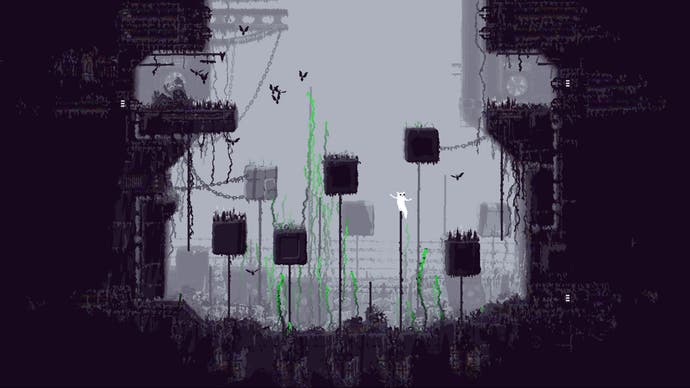
Silent Hill 4's Room 302 isn't the only famous unsafe room. The mansion in Fatal Frame 3: The Tormented also serves as a shelter for most of your time in the game, since it's only when you dream that ethereal beings manifest themselves in the Manor of Sleep. But over time that protection begins to fall apart as paranormal presences bleed into reality. Looking over your shoulder becomes mandatory.
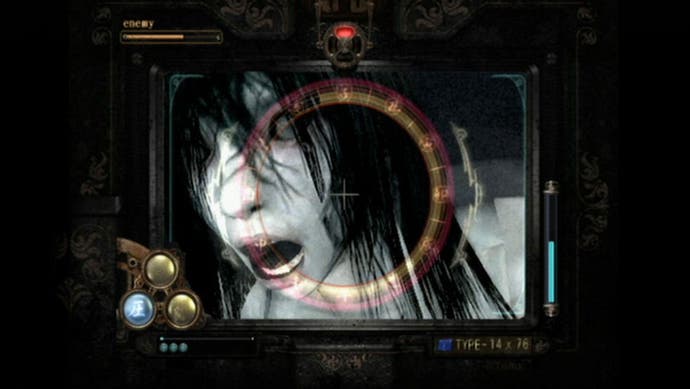
Another known example is the Back Hall from Amnesia: The Dark Descent. After escaping the archive tunnels and witnessing first hand some of the horrors that await Daniel in the story, you find yourself in a big, surprisingly illuminated room. There's an eerie fountain in its centre that doesn't give much confidence, but it's the soothing music (the track is fittingly called 'Safe Ambient') and the sudden change of environment that provide a feeling that wasn't in any of the rooms before it.
Such feeling is later swept away by the presence of The Shadow, an invisible enemy who is constantly chasing Daniel around the manor and its whereabouts. The water in the fountain turns red and organic residue invades the hall completely. Another safe space mutates into anything but.
"A core element of the game is being hunted by this vast horror that destroys everything in its past," creative director and Frictional Games co-founder Thomas Grip tells me. "So we wanted to make sure the environments had this sense of changing as this threat grew. Players were unlikely to revisit many of the levels, so the hub levels felt like the right place to do this.
"We didn't want players to become too used to the environments, as that kills that sense of uncertainty you want in a horror game. You get good horror when people look around and don't know what they might find. If players feel their surroundings are very stable and familiar, you won't have that. So, the trick is to always keep changing."
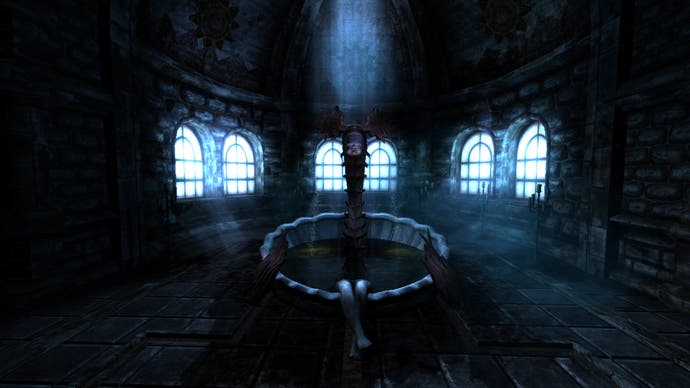
Looking back, Silent Hill 4's use of room 302 as the only recurrent save point was a gamble in terms of player exhaustion. "At the time, I didn't intend to put save points outside the room," Murakoshi continues. "However, it's insanely inconceivable in recent games. 2004 was different from the current game situation. [Taking it into consideration], I think it was not balanced, but for me the difficulty before returning to the save point was not so high." He adds that in today's context, Silent Hill 4 would need to be more kind towards the player, but most of the choices made back in the early 2000s would remain, such as expressing a normal daily life on the outside as much as possible, granting the illusion that one day you might resume your routine with the others.
This included the neighbors occasionally appearing in the door's fisheye, along with everything you could see from the room's window. (Usuda based the window on Alfred Hitchcock's Rear Window.) I also asked Murakoshi if the shifting house from Kojima Productions' horror tease P.T. could be considered a safe room, which he immediately denied, recalling the initial sense of shelter in room 302: "That house is not safe. It doesn't have any elements to give you a sense of security."
Gloomwood's developer Dillon Rogers has been documenting these spaces on Twitter for almost two years now, and argues disrupting a safe room doesn't involve just timing, but also the consideration of what comes next, based on the effect it has on the player. Knowing that a safe room no longer holds its initial purpose can be good tension in its own right, but periods of time dedicated to allowing players to let down their guard are equally important to prevent exhaustion.
In his game, phonographs serve as the typewriter equivalent, and players can tell when one is nearby because the devices play music. Depending on the difficulty, wax cylinders also need to be used to save their current progress. As of now, Rogers doesn't want to reveal if the game ever disrupts its rules, which is probably for the better. "You have to be quite careful about breaking the sanctity of the safe room as once that bell has been rung, you can't unring it," he tells me.
The first memory he has about a traditional safe room being broken comes from the original Resident Evil 2. There's one moment in the utility building behind the police station where two zombies attack during one of the series' iconic door opening sequences, which were only supposed to be a stylish way of presenting loading screen transitions between rooms up to that point.
"I don't think that moment would have worked as well if the original Resident Evil hadn't built up a full game's worth of expectations," Rogers says. "The player entered the sequel knowing the original game always assumed the door sequences and safe rooms were off-limits, and when the game broke both rules at once - it was frightening."
Now that's a contrasting expression.
